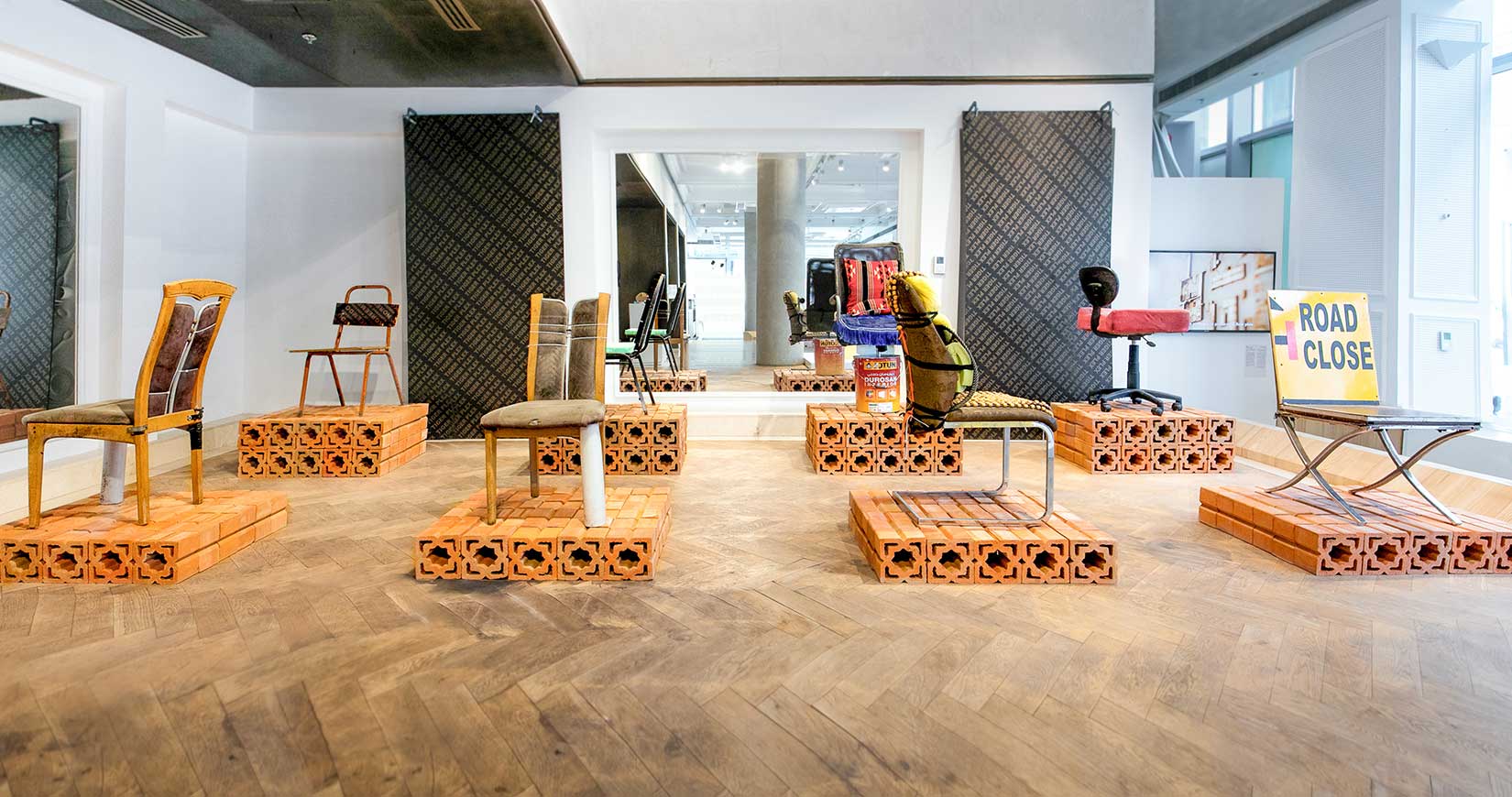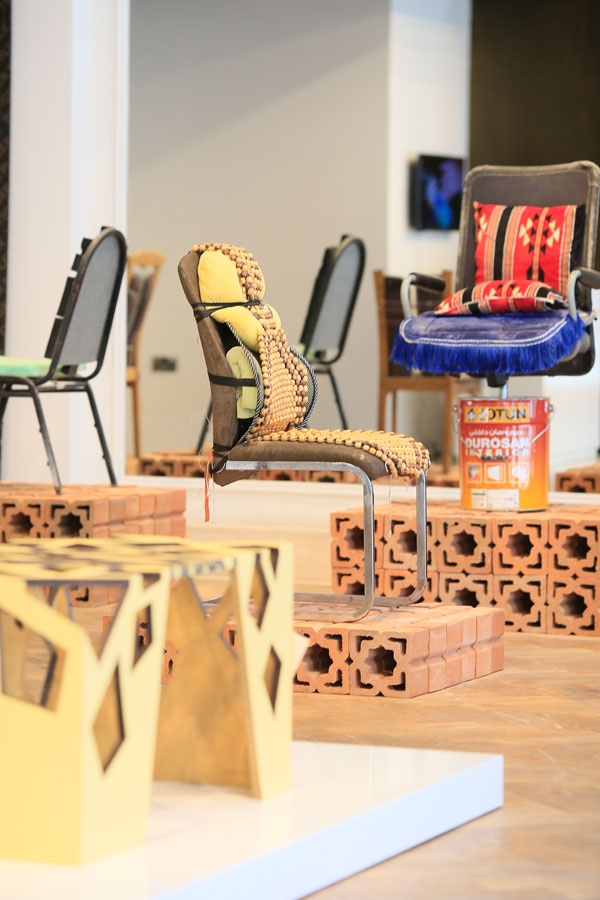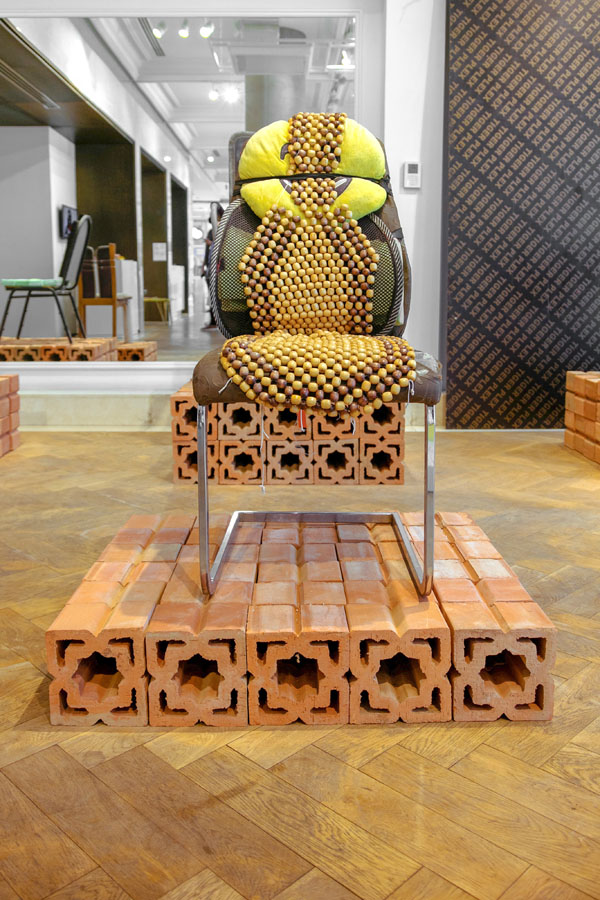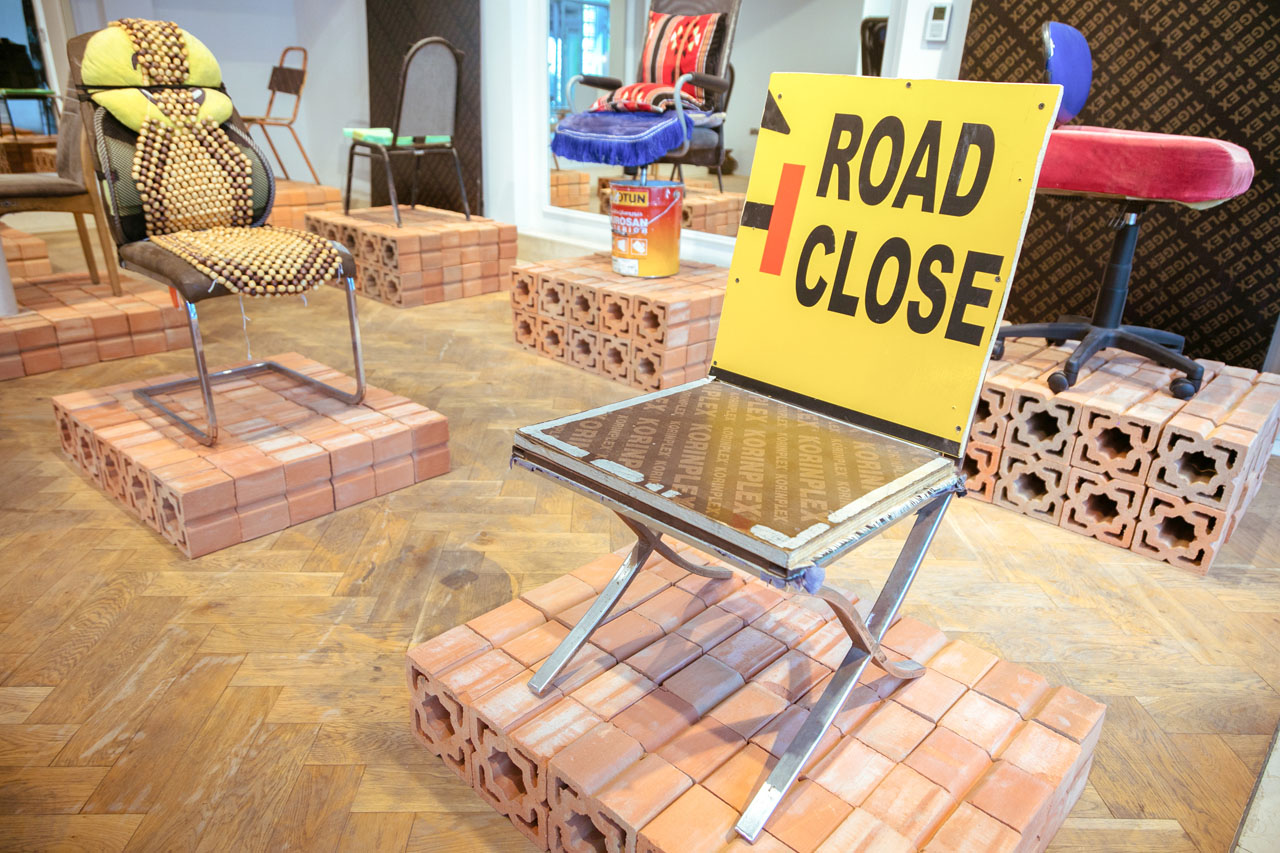Copyright © 2025 Motivate Media Group. All rights reserved.
Christopher Benton’s ‘How to Be at Rest’ installation challenges traditional perceptions of design
The installation was part of the 'UAE Designer Exhibition' during Dubai Design Week 2020

Part of the UAE Designer Exhibition, Dubai-based artist Christopher Joshua Benton’s installation titled, ‘How to Be at Rest’, presented a collection of found chairs sourced from various neighbourhoods across the UAE: from Satwa, Mina Zayed and Khor Fakkan – industrial areas with mostly South Asian working-class communities that exist on the periphery of the country’s metropolis of glistening skyscrapers where residents visit for textiles, furniture upholstery and automobile workshops.

Christopher Benson. Photo by Jalal Abuthina.
Exploring ideas of found object art, vernacular an improvised design, power, social class and sustainability, ‘How to Be at Rest’ is a refreshing presentation of design created out of necessity, using creativity and available materials. While possessing all the qualities of what one would describe as good design, the chairs are made by non-designers and were presented in their found form with no intervention by the artist. The installation forces one to question what design outside the discipline can teach us about outsider voices, eco-consciousness and alternative design solutions.
Read interview below:
What sparked your interest in these found chairs? How long have you been researching and collecting them?
Christopher Benson: I lived in Satwa, Dubai for two years. At the time, it was the only neighbourhood I could afford. Whenever I left my home, I’d be surprised at all of the inventive ways people would just make things work around them: the way people would use concrete posts to reserve a parking space, or fix a broken lock, or improvise seating. Over time, I realised that I had collected hundreds of such images.

What is significant to you about their designs?
I love that each chair is totally representative of where it was found. Chairs from the carpentry shop re-used old wood. Chairs from the car upholstery shop recycled fabrics and car parts. The dozens of chairs that I saw in the industrial area of Khor Fakkan all have the same small-frame base—there must have been a school that closed down there. I devised a term called “improvisational vernacular furniture” to talk about these objects where everything is essential, everything can be repaired and everything exists in its own time and place.
Naturally, I am not the first person to realise the poetry in such items. The sculptor Abraham Cruzvillegas has coined the word “autoconstrucción” to talk about self-construction “by any means necessary”; he was inspired by seeing how people make do in the Mexican neighbourhood where he grew up. In Hindi, there’s a word called ‘jugaad’ which loosely means ‘frugal innovation’—or more specifically, using whatever material is at hand to make things work. The academic Deepa Butoliya furthers this conception with her term “critical jugaad” which is part of her design pedagogy. It positions ‘jugaad’ as a coping mechanism for everyday resistance and survival against colonial oppression.

What lessons do these chairs potentially teach their viewers?
One of the premises that I’m putting forward with “improvisational vernacular” is that everything can be repaired. That means that through modes of refurbishment and renewal, every object is atemporal and can theoretically last forever. All you have to do is fix it again.
These chairs also offer important back-to-basics lessons to designers: remember the body, let function guide form, work quickly, be intuitive, use local materials, build things to last. And if you go back to these essentials, sustainability will follow. If function comes first, you get an object that is less trendy and thus less disposable. If you make things more durable, they are less likely to be discarded. And as you can see, creativity can still exist within these constraints, too. All of these chairs are so imaginative.

What I also found interesting was the fact that you chose to instil almost no intervention, other than curating the display. Why did you feel this was important?
Depending on the project, I try to be as invisible as possible. In this instance, I am presenting found objects as ready-made, which is a classic Duchampian gesture. It allows the audience to focus more on the material reality that brings each object to life, rather than on my role as an artist. Since I am not the designer-maker of these objects, it’s best that I function more as ‘caretaker’. The corollary of this is that the more minimised my role, the more visible the craftspeople become—people who are typically left out of such design conversations. How were you able to possess these pieces? Did the men/women who owned these chairs allow you to use them and then bring them back? I’m curious about the scenarios in which these chairs were obtained. Collecting the chairs was my favourite part! I purchased each chair, negotiating, begging, and sometimes playing hard ball. It’s a quizzical thing to ask people to stand up while you look at a chair that they are currently sitting on—and then offer to buy it. But I go into most of these neighbourhoods a lot, so I think people are familiar with my crazy ideas. When I explained the project, many of the makers were really proud that someone appreciated their craft. One especially entrepreneurial artisan even offered to fabricate as many chairs in any style I wanted. Of course, I told him no. Authenticity is key.

How did you feel seeing these chairs within Dubai Design District? What do you think it added to the overall dialogue?
I can’t imagine a more important place to show these chairs. At Dubai Design Week, people have expectations: there’s plenty of thoughtful, well-crafted, expensive, collectible furniture to go around. And as beautiful as those kinds of objects are, it’s all quite inaccessible — it’s mostly furniture that will ultimately end up in homes of the wealthy or in hotel lobbies. ‘How to Be at Rest’ serves as a counterpoint to that: it’s ordinary people using ordinary materials to make extraordinary things. It’s not speculative, it’s real. It’s not for display, it’s for use. These are chairs that people may see everyday but never notice, constructed by people who are sometimes less-than-seen.
It’s quite punk rock to put chairs like these in a mannered placed like Dubai Design Week. A big part of my artistic practice is to flatten hierarchies of class and taste. It’s not about pointing to the divide between the high and low, it’s about showing people that neither really exist.
It’s important to remember that Satwa—where many of these chairs were found—is only a 10-minute drive from where Dubai Design Week is held. This can bring up some critical social questions: Why are the ways people live and work between these two places so vastly different? Why are their resources allocated so unevenly? And why can’t people in that neighbourhood be part of the same conversation on craft and design?
The Latest
Inside The Charleston
A tribute to Galle Fort’s complex heritage, The Charleston blends Art Deco elegance with Sri Lankan artistry and Bawa-infused modernism
Design Take: Buddha Bar
We unveil the story behind the iconic design of the much-loved Buddha Bar in Grosvenor House.
A Layered Narrative
An Edwardian home in London becomes a serene gallery of culture, craft and contemporary design
A Brand Symphony
Kader Mithani, CEO of Casamia, and Gian Luca Gessi, CEO of Gessi, reflect on the partnership between the two brands
The Art of Wellness
Kintsugi in Abu Dhabi, situated in a seven-storey villa, offers the ultimate zen retreat
Design Take: Inside the Royal Suite at Jumeirah Al Naseem
With sweeping views of the ocean and Burj Al Arab, this two bedroom royal suite offers a lush stay.
Elevated Living
Designed by La Bottega Interiors, this penthouse at the Delano Dubai echoes soft minimalism
Quiet Luxury
Studio SuCo transforms a villa in Dubailand into a refined home
Contrasting Textures
Located in Al Barari and designed by BONE Studio, this home provides both openness and intimacy through the unique use of materials
Stillness, Form and Function
Yasmin Farahmandy of Y Design Interior has designed a home for a creative from the film industry
From Private to Public
How ELE Interior is reshaping hospitality and commercial spaces around the world – while staying unmistakably itself
A collaborative design journey
A Life By Design (ALBD) Group and Condor Developers have collaborated on some standout spaces in Dubai
















